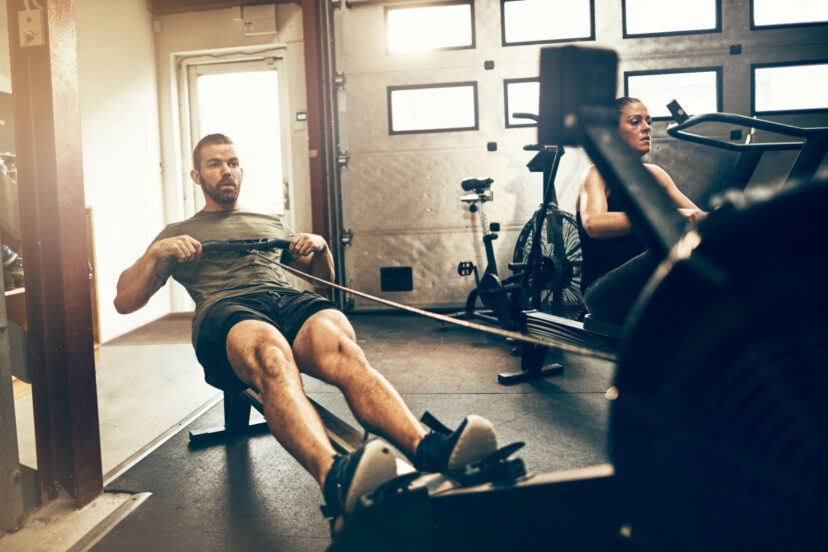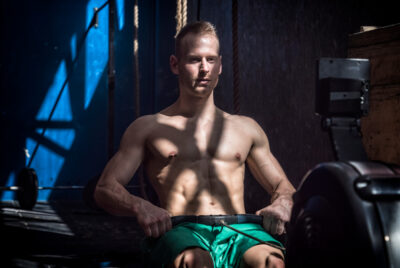Muscles Worked on Rowing Machine
Rowing machines offer an exceptional full-body workout that engages multiple muscle groups simultaneously, making them an ideal choice for individuals seeking an efficient and effective exercise routine. Let’s discuss muscles worked on rowing machine.
Muscles worked on rowing machine workouts
Rowing machine workouts provide a comprehensive and dynamic way to engage various muscle groups. By understanding the specific muscles targeted, you can optimize your workouts and achieve desired results more effectively. Let’s explore the key muscles involved:
The Catch
At the beginning of the rowing stroke, the Catch position sets the foundation for a powerful and efficient workout. This phase involves sitting upright, knees bent, and shins vertical while gripping the rowing handle.
Muscles worked on rowing machine: Catch phase
The muscles primarily emphasized during the Catch phase include:
- Quadriceps: The muscles on the front of your thighs are engaged to initiate the drive.
- Hamstrings: Situated on the back of your thighs, the hamstrings support the knee flexion during the catch position.
- Glutes: The gluteal muscles provide stability and play a crucial role in generating power during the drive.
The Drive
Once you’ve established the Catch position, it’s time to initiate the Drive phase. This phase involves pushing off with your legs while maintaining a straight back and leaning slightly backward.
Muscles worked on rowing machine: The Drive
The Drive engages the following major muscle groups:
- Quadriceps: As you extend your legs, the quadriceps contract to generate force and power.
- Glutes: The gluteal muscles continue to play a significant role in the Drive, contributing to the extension of your hips.
- Core muscles: Engaging your core throughout the Drive helps maintain stability and supports the transfer of power from your legs to the upper body.
- Upper back muscles: The muscles in your upper back, including the rhomboids and trapezius, are activated during the pulling motion.
The Finish
As you approach the end of the rowing stroke, you enter the Finish phase. This phase involves leaning back slightly, engaging your core, and pulling the handle towards your upper abdomen.
Muscles worked on rowing machine: The Finish
The Finish targets the following muscles:
- Biceps: The biceps assist in the final pull towards your body during the Finish, providing additional strength and stability.
- Upper back muscles: The muscles in your upper back continue to be engaged, working to retract your shoulder blades and maintain proper posture.
- Forearms: Gripping the handle tightly during the Finish phase also activates the muscles in your forearms.
The Recovery
After completing the Finish phase, you enter the Recovery phase, which involves returning to the starting position. During this phase, your muscles are actively engaged in controlling the movement and preparing for the next stroke.
Muscles worked on rowing machine: The Recovery
The muscles utilized during the Recovery include:
- Core muscles: Your core muscles play a vital role in maintaining stability and control as you return to the Catch position.
- Hamstrings: The hamstrings help control the movement as you extend your legs back to the starting position.
- Upper back and shoulder muscles: These muscles work to control the movement of the handle as you return it forward.
Helpful suggestions for maximizing muscle engagement
To make the most of your rowing machine workouts and optimize muscle engagement, consider the following suggestions:
- Focus on proper technique and form: Ensure that you maintain correct posture throughout the stroke and use a smooth, controlled motion to engage the targeted muscle groups effectively.
- Vary intensity and resistance levels: Adjust the resistance settings on the rowing machine to challenge your muscles and prevent plateaus. Incorporate interval training and HIIT workouts to vary the intensity and stimulate muscle growth.
- Include strength training exercises: Supplement your rowing machine workouts with strength training exercises that target specific muscle groups. This can further enhance muscle development and overall strength.
- Pay attention to your breathing: Coordinate your breathing with the different phases of the rowing stroke to optimize oxygen flow and enhance endurance.
- Listen to your body: Take rest days as needed and listen to your body’s signals to prevent overexertion or injury. Consistency is important, but so is allowing your muscles time to recover and rebuild.
In Summary
Rowing machines offer a fantastic opportunity to engage multiple muscle groups simultaneously, providing a full-body workout with numerous benefits. By understanding the muscles worked during each phase of the rowing stroke, you can maximize your workouts and achieve your fitness goals more effectively. Remember to prioritize proper technique, vary intensity, and listen to your body for a rewarding and enjoyable rowing machine experience.
FAQ
How often should I use a rowing machine?
The frequency of rowing machine workouts depends on your fitness level and goals. It’s generally recommended to aim for at least three sessions per week, with rest days in between for muscle recovery.
Can rowing machines help strengthen the core?
Yes, rowing machine workouts engage the core muscles, helping to strengthen and stabilize the abdominal and back muscles.
Is rowing a low-impact exercise?
Yes, rowing is considered a low-impact exercise as it puts minimal stress on the joints. It provides a challenging workout while minimizing the risk of joint injuries commonly associated with high-impact activities.




